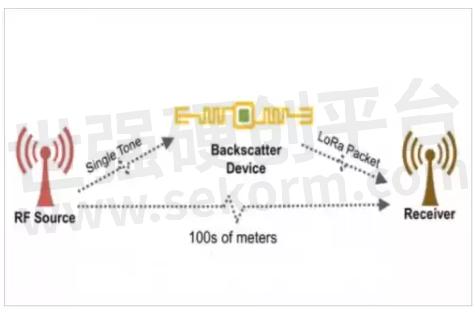G-NiceRF LoRa Backscatter Device LoRa1276-C1 Provides Long-Range Communication with Low-Power

Deficiencies in Current Wireless Communication Technology
Current wireless communication technologies tend to offer only one of two options: low-power, cheap, but short-range or high-power, long-range, but expensive. A comparison was made against Wi-Fi, SigFox, Zigbee, and LTE-M active radio technologies, which were found to be significantly more expensive ($4 to $6 per unit), and also had much higher power requirements. While all the aforementioned have long-range communication capabilities, their energy and economic requirements made them less ideal for large-scale use in embedded systems.
Supercharging the Use of Backscatter
Ambient backscatter technology uses radio frequencies already being produced by other devices to generate its own electricity and reflect a signal to other devices. These radio signals can be Wi-Fi, radio, television, or mobile device signals. This has a great advantage of not requiring or depending on a built-in or physically connected power source and is also an ultra-low-cost solution.
However, ambient backscattering also has some downsides: its range is quite limited, it can be unreliable, and in medical applications the attenuation of RF signals by the human body causes the range of medical or wearable devices to be significantly reduced.

Hence, the addition of LoRa, a Low-Power Wide-Area-Network (LPWAN) specification, that sends smaller packets at lower power and has a longer range. This adds the required sensitivity to make the backscattering technique operational over greater distances with the addition of a small power source providing 9.25 micro-Watts. The sensitivity was brought down to -149 dBm, had a data rate of 18bps-37.5kbps, and could be powered by a button cell battery, a printed battery, or a small solar cell.
G-NiceRF LoRa1276-C1 LoRa Backscatter Device integrates Semtech RF transceiver chip SX1276, which adopts LoRa Spread Spectrum modulation frequency hopping technique. The features of long distance and high sensitivity (-139 dBm) make this module perform better than FSK and GFSK module. Multi-signal won't affect each other even in crowd frequency environment; it comes with strong anti-interference performance. This module is 100mW and ultra small size, widely used in AMR,remote industrial control filed.
- +1 Like
- Add to Favorites
Recommend
This document is provided by Sekorm Platform for VIP exclusive service. The copyright is owned by Sekorm. Without authorization, any medias, websites or individual are not allowed to reprint. When authorizing the reprint, the link of www.sekorm.com must be indicated.






































































































































































































































































































































































































































































































































































































































































































































































































































































































